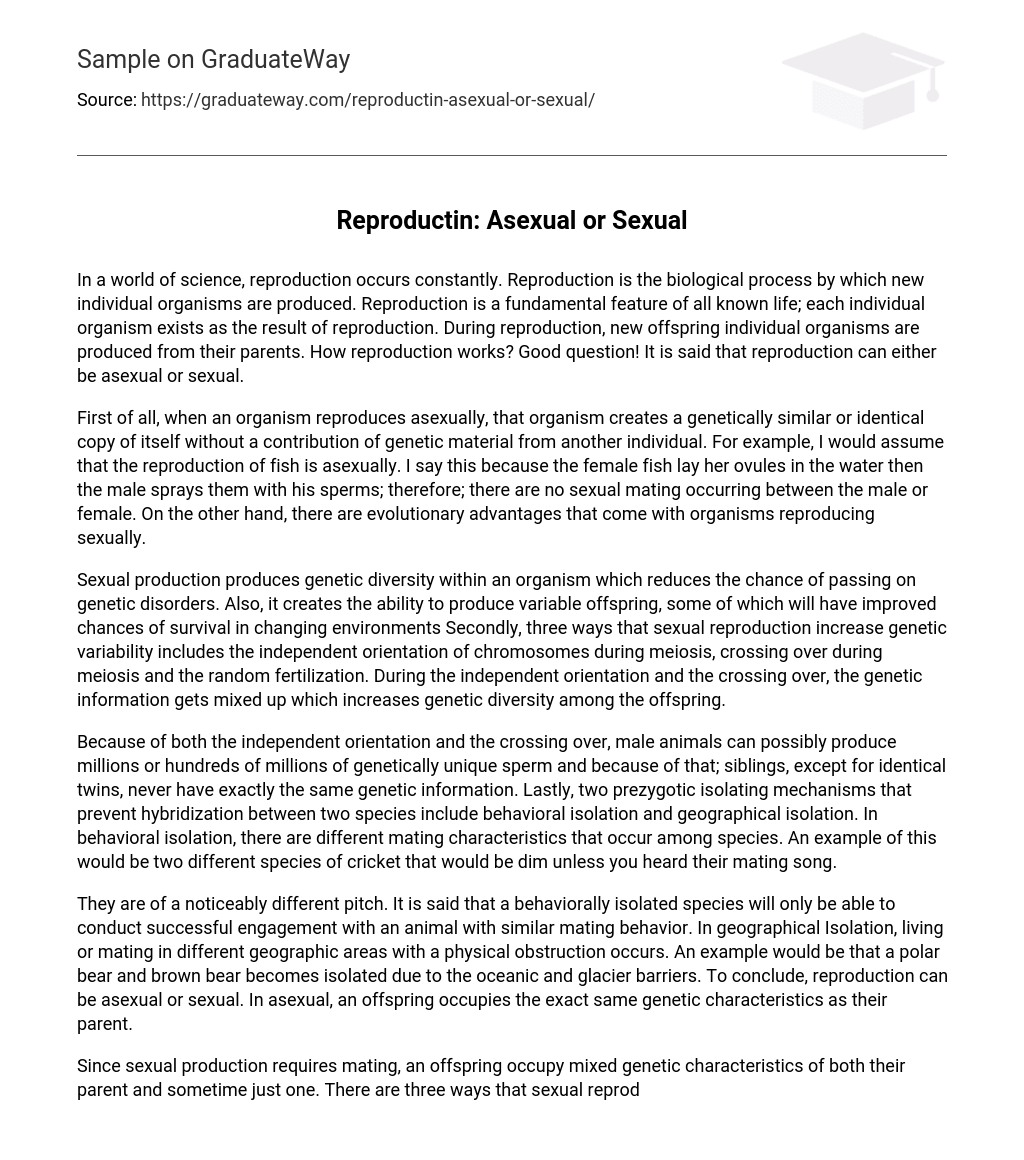In a world of science, reproduction occurs constantly. Reproduction is the biological process by which new individual organisms are produced. Reproduction is a fundamental feature of all known life; each individual organism exists as the result of reproduction. During reproduction, new offspring individual organisms are produced from their parents. How reproduction works? Good question! It is said that reproduction can either be asexual or sexual.
First of all, when an organism reproduces asexually, that organism creates a genetically similar or identical copy of itself without a contribution of genetic material from another individual. For example, I would assume that the reproduction of fish is asexually. I say this because the female fish lay her ovules in the water then the male sprays them with his sperms; therefore; there are no sexual mating occurring between the male or female. On the other hand, there are evolutionary advantages that come with organisms reproducing sexually.
Sexual production produces genetic diversity within an organism which reduces the chance of passing on genetic disorders. Also, it creates the ability to produce variable offspring, some of which will have improved chances of survival in changing environments Secondly, three ways that sexual reproduction increase genetic variability includes the independent orientation of chromosomes during meiosis, crossing over during meiosis and the random fertilization. During the independent orientation and the crossing over, the genetic information gets mixed up which increases genetic diversity among the offspring.
Because of both the independent orientation and the crossing over, male animals can possibly produce millions or hundreds of millions of genetically unique sperm and because of that; siblings, except for identical twins, never have exactly the same genetic information. Lastly, two prezygotic isolating mechanisms that prevent hybridization between two species include behavioral isolation and geographical isolation. In behavioral isolation, there are different mating characteristics that occur among species. An example of this would be two different species of cricket that would be dim unless you heard their mating song.
They are of a noticeably different pitch. It is said that a behaviorally isolated species will only be able to conduct successful engagement with an animal with similar mating behavior. In geographical Isolation, living or mating in different geographic areas with a physical obstruction occurs. An example would be that a polar bear and brown bear becomes isolated due to the oceanic and glacier barriers. To conclude, reproduction can be asexual or sexual. In asexual, an offspring occupies the exact same genetic characteristics as their parent.
Since sexual production requires mating, an offspring occupy mixed genetic characteristics of both their parent and sometime just one. There are three ways that sexual reproduction increase genetic variability which includes independent assortment of chromosomes, crossing over, and random fertilization. There are about six prezygotic isolating mechanisms that prevent hybridization between two species which includes geographical isolation, temporal isolation, behavioral isolation, gametic isolation, mechanical isolation and ecological isolation.





